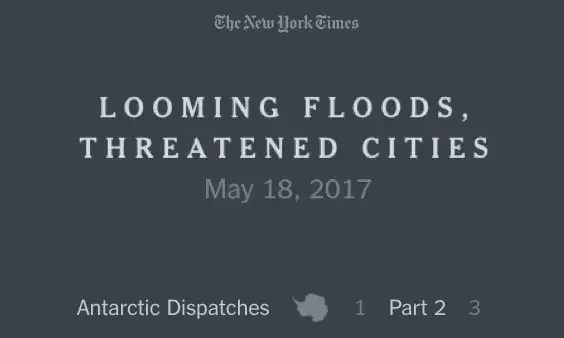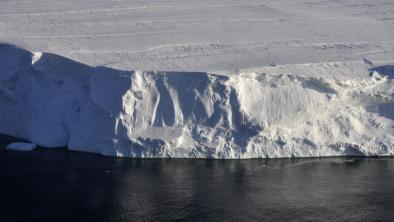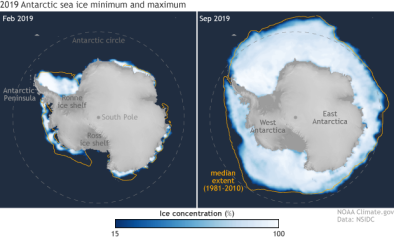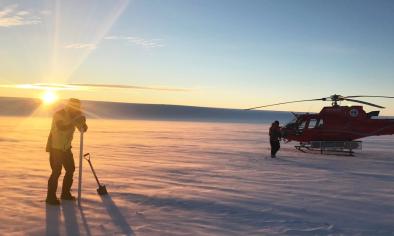Looming Floods, Threatened Cities

Excerpted below is Part II of three dispatches from a New York Times reporting trip to Antarctica.




THE RISK IS CLEAR: Antarctica’s collapse has the potential to inundate coastal cities across the globe.
Over tens of millions of years, thin layers of snow falling on the continent — in many places, just a light dusting every year — were pressed into ice, burying mountain ranges and building an ice sheet more than two miles thick. Under its own weight, that ice flows downhill in slow-moving streams that eventually drop icebergs into the sea.
If that ice sheet were to disintegrate, it could raise the level of the sea by more than 160 feet — a potential apocalypse, depending on exactly how fast it happened. Recent research suggests that if society burns all the fossil fuels known to exist, the collapse of the ice sheet will become inevitable.
...
[S]tarting in the 1970s, lone scientific voices warned that the ice sheets could be vulnerable much sooner if greenhouse emissions were not checked. A scientist at Ohio State University, John H. Mercer, pointed in particular to the western part of Antarctica.
Because the West Antarctic ice sheet sits in a giant bowl, much of it below sea level, it is fundamentally unstable.
...
Extensive satellite monitoring began in the 1990s and, within a decade, evidence emerged that the ice sheet was already starting to speed up, retreat and destabilize. Since then, the rate at which some of the glaciers are dumping ice into the ocean has tripled. More than 100 billion tons are lost every year.
In 2016, Robert M. DeConto of the University of Massachusetts, Amherst, and David Pollard of Pennsylvania State University published a study,[3] based on a computer analysis of Antarctica, that raised alarms worldwide.
Incorporating recent advances in the understanding of how ice sheets might break apart, they found that both West Antarctica and some vulnerable parts of East Antarctica would go into an unstoppable collapse if the Earth continued to warm at a rapid pace.
In their worst-case scenario, the sea level could rise by six feet by the end of this century, and the pace could pick up drastically in the 22nd century. Dr. DeConto and Dr. Pollard do not claim that this is a certainty — they acknowledge that their analysis is still rough — but they argue that the possibility should be taken seriously.
Related Content





